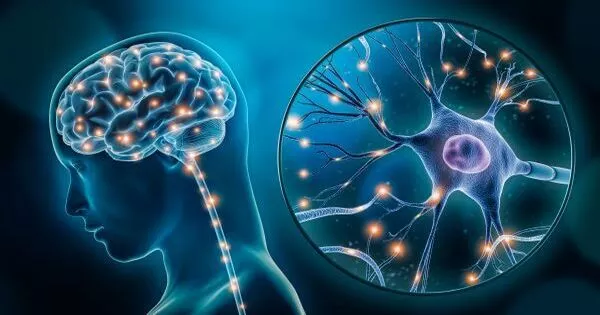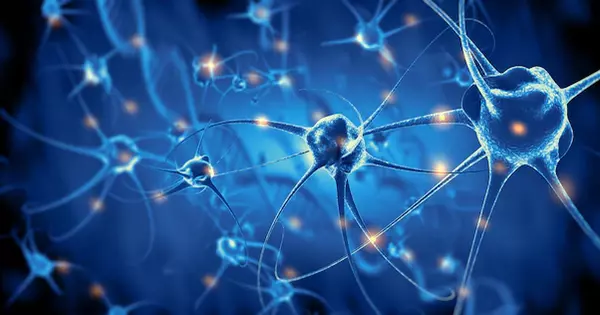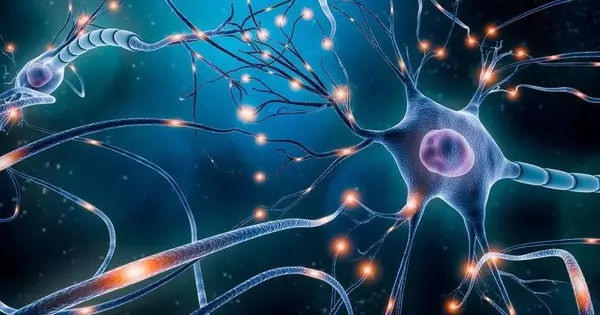Johns Hopkins Medicine researchers disclose new evidence that a protein pushed out of some—but not all—populations of “helper” cells in the brain called astrocytes plays a specialized role in regulating the creation of connections among neurons required for learning and creating new memories.
The researchers conducted proof-of-concept experiments on mice genetically created and bred with fewer such connections, demonstrating that they could transport corrected proteins via nanoparticles to replace the missing protein needed for “road repairs” on the damaged neural highway.
Because such connective networks are lost or damaged as a result of neurodegenerative diseases like Alzheimer’s or certain types of intellectual disability like Norrie disease, the researchers say their findings advance efforts to regrow and repair the networks and potentially restore normal brain function. The research was published in the May issue of Nature Neuroscience.
“We are looking at the fundamental biology of how astrocytes function, but we may have discovered a new target for someday intervening in neurodegenerative diseases with novel therapeutics,” says Jeffrey Rothstein, M.D., Ph.D., John W. Griffin Director of the Brain Science Institute and professor of neurology at Johns Hopkins University.

Although astrocytes appear to look the same in the brain, we had an idea that they might have specific roles in the brain due to regional variances in brain function and documented abnormalities in particular disorders, Rothstein adds. “Our present research has raised the notion that learning to harness the individual variances in these diverse populations of astrocytes may allow us to regulate brain development or perhaps reverse the effects of certain brain disorders.”
Astrocytes are support cells in the brain that serve as guides to drive new cells, stimulate chemical transmission, and clean up byproducts of brain cell metabolism.
“We are looking at the fundamental biology of how astrocytes function, but perhaps have discovered a new target for someday intervening in neurodegenerative diseases with novel therapeutics,”
says Jeffrey Rothstein, M.D., Ph.D., the John W. Griffin Director of the Brain Science Institute and professor of neurology at the Johns Hopkins University School of Medicine.
Rothstein’s team concentrated on a specific astrocyte protein, glutamate transporter-1, which earlier research revealed was lost from astrocytes in areas of the brain affected by neurodegenerative illnesses. After a message is given to another cell, the protein generally sucks away the chemical “messenger” glutamate from the gaps between neurons, a step essential to halt the transmission and avoid hazardous quantities of glutamate from building up.
When these glutamate transporters are lost in particular areas of the brain, such as the motor cortex and spinal cord in people with amyotrophic lateral sclerosis (ALS), glutamate remains for much too long, sending messages that overexcite and destroy the cells.
Rothstein and colleagues focused on the area of DNA in front of the gene that generally controls the on-off switch required to create the protein to figure out how the brain selects which cells need glutamate transporters. They genetically modified mice so that they would light up red in every cell when the gene was activated.

The glutamate transporter is normally activated in all astrocytes. However, by employing 1,000-to 7,000-bit chunks of DNA code from the glutamate on-off switch, all cells in the brain, including neurons, lit red. It wasn’t until the researchers tried the longest sequence of an 8,300-bit DNA code from this place that they noticed selection in red cells. These red cells were all astrocytes, but only in particular layers of the cortex of the mice’s brain.
Because they were able to detect these “8.3 red astrocytes,” the researchers hypothesized that they might have a different function than other astrocytes in the brain. To learn more about what these 8.3 red astrocytes do in the brain, the researchers used a cell-sorting machine to separate the red astrocytes from the uncolored ones in mouse brain cortical tissue, and then identified which genes were turned on at much higher levels in the red cell populations compared to the uncolored cell populations. The researchers discovered that the 8.3 red astrocytes activate a gene that codes for a distinct protein called Norrin.
Rothstein’s team treated neurons from normal mouse brains with Norrin and discovered that those neurons generated extra “branches”—or extensions—used to transfer chemical messages between brain cells. The researchers then examined the brains of mice modified to lack Norrin and discovered that these neurons had fewer branches than neurons in healthy mice that produced Norrin, according to Rothstein.
In another series of trials, the researchers integrated the Norrin DNA code as well as the 8,300 “location” DNA into deliverable nanoparticles. When they introduced the Norrin nanoparticles into the brains of mice designed without Norrin, the neurons in these mice proceeded to rapidly produce many more branches, indicating that neural networks were being repaired. They repeated the studies on human neurons as well.
Rothstein points out that Norrie illness is caused by Norrin protein mutations that diminish protein levels in people. Norrie disease is an uncommon genetic disorder that can lead to blindness in infancy and intellectual incapacity. Because the researchers were able to generate new communication branches, they believe Norrin could one day be used to cure some types of intellectual disorders, such as Norrie illness.
The researchers’ next steps will be to see if Norrin can restore connections in the brains of animal models with neurodegenerative disorders, and Miller and Rothstein have filed a patent for Norrin in anticipation of future success.
Other Johns Hopkins researchers who contributed to the paper include Sean Miller, Thomas Philips, Namho Kim, Raha Dastgheyb, Zhuoxun Chen, Yi-Chun Hsieh, J. Gavin Daigle, Jeannie Chew, Svetlana Vidensky, Jacqueline Pham, Ethan Hughes, Michael Robinson, Rita Sattler, Jung Soo Suk, Dwight Bergles, Norman Haughey, Mikhail Pletn
The National Science Foundation Graduate Fellowship Research Program and the National Institute of Neurological Disorders and Stroke funded this research (R01NS092067, R01NS094239).





